Posts Tagged ‘History’
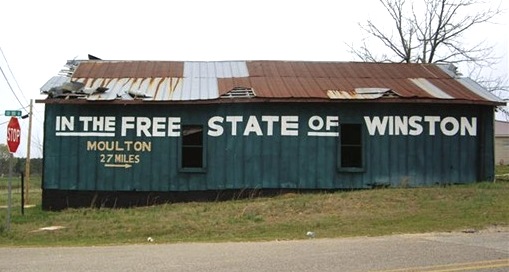
My roots are Southern. There are both Confederates and Unionists on my family tree. The Unionists are the ones I’ve spent five years trying to write a book about—complicated in more ways than I can express. They were a bunch of Northern Alabamans who wanted no part of Secession. Their county delegate to the January 1861 Alabama Secession Convention, a schoolteacher named Christopher Sheats, was beaten and jailed for refusing to sign the ordinance of secession.
These Winston County folks—led by my direct ancestors, the Curtis brothers—passed a resolution saying that if Alabama could secede from the Union, Winston County could secede from Alabama. Many Winston County men joined the Union army, including my 4th-great-grandfather, John Curtis. Others were killed in various gruesome ways by members of the Confederate Home Guard—their own neighbors. Another of my 4th-greats, one Wiley Tyler, died of starvation and infection in a Confederate prison camp. He’s where my pen name comes from.
I wish I could say that these devoted Unionist ancestors of mine—who fought and died because they refused to be traitors to their nation—had been passionate abolitionists. They weren’t. But they did know that the reason behind the War was slavery. Frank discussion of that reality is everywhere in their letters—just as it is in the letters written by the leaders of the Secession movement. In 1860 and early 1861, a number of men were appointed by various Southern states to be secession commissioners. These men traveled far and wide, speaking and writing in favor of Secession. You can read their letters. I have. They don’t beat around the bush. They believed that Lincoln was going to destroy the institution of slavery. You can read these letters—this primary source material—in a book called Apostles of Disunion.
When we get our information second-, third-, tenth-hand—when it comes to us filtered and packaged by people with something to sell—it can be difficult to get at the truth. The myth of the Lost Cause is one of those packages. The Confederate monuments, most of which were put up in the 20th century, long after the War—including many that were built in the 60s during the Civil Rights movement—are part of that mythology, that package. And it’s a package that was designed for and marketed explicitly to white people.
Those monuments celebrate men who went to war against the United States of America. Men who went to war because the Republic was finally moving to end the practice of enslaving other human beings.
Enslaving. Other. Human. Beings.
My friend Lydia Netzer wrote,
A statue of General Lee is NOT the same thing as a concentration camp turned into a museum.
A concentration camp turned into a museum would be like a slave market turned into a museum, or a slave plantation turned into a museum.
A statue of General Lee would be like if you tore down a concentration camp and left up a statue of Hermann Göring on a pedestal.
Removing these statues—moving them, perhaps, to a museum where these men’s own words could provide context on their intentions in declaring war against their own country—is in no way “erasing history.” We must not let pat phrases like that cheapen the way we talk about and think about these grave matters.
We must go deeper than the talking points. If you are bothered by the idea of history being “erased,” then READ that history—the primary source materials that clearly, directly, unequivocally laid out the reasons for the war in the first place.
Such as this address made by William Harris, a sitting Mississippi Supreme Court justice, to the Georgia state legislature, in his role as a secession commissioner:
“They [Lincoln’s Republicans and the North] have demanded, and now demand, equality between the white and negro races…equality in representation, equality in the right of suffrage, equality in the honors and emoluments of office, equality in the social circle, equality in the rights of matrimony…
“Our fathers made this a government for the white man, rejecting the negro, as an ignorant, inferior, barbarian race, incapable of self-government, and not, therefore, entitled to be associated with the white man upon terms of civil, political, or social equality…[Mississippi] had rather see the last of her race, men, women, and children, immolated in one common funeral pile [pyre], than see them subjected to the degradation of civil, political, and social equality with the negro race.”
The push to remove Confederate monuments isn’t an attempt to “erase” history. Quite the opposite. It’s an effort to expose the truth that has been papered over for far too long.
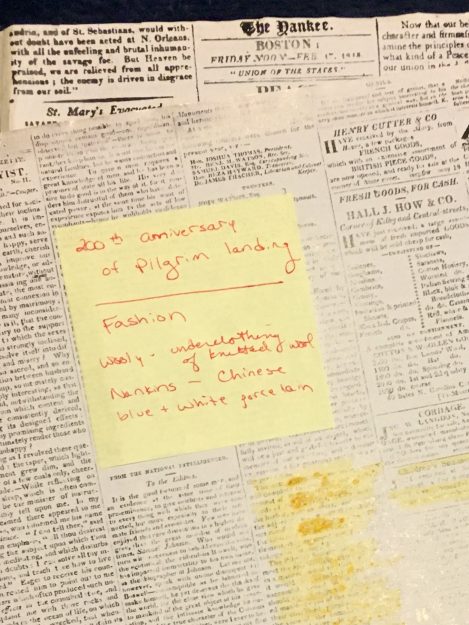
Feb. 17, 1818 Yankee article with my researcher’s sticky note still in place
I woke up to the news that the National Endowment for the Arts and National Endowment for the Humanities are among the programs slated for elimination in the new administration’s budget proposals. Not exactly a surprise, but still it smacked me in the gut, and I’ve walked around feeling ill all day.
Anyone who knows me knows why I’m sick about the scrapping of the NEA. But losing the National Endowment for the Humanities as well? Takes my breath away. If you’ve read my Charlotte books, you’ve seen one NEH project in action. The NEH funded the US Newspaper Program, which gave grants to all 50 states to preserve old, crumbling newspapers on microfilm.
Massachusetts, for example, received $770,942 in NEH support to catalog over 8000 titles, including the 1680 Publick Occurrences, America’s first newspaper. There are treasures in those archives that would have been lost to time, but for this federal funding program.
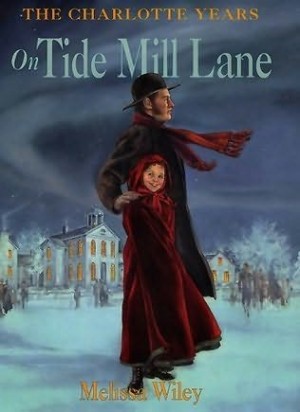 You know that hurricane I wrote about in Tide Mill Lane? I learned of it in The Yankee—including whose roof was torn off and what other damages Roxbury folks suffered. The Brighton Cattle Show, right down to all the winners? The Yankee. The vandalism of the Bible in a Roxbury church. The first gaslights in Boston. The parade, the details of the wagons and the whole celebration. The first elephant brought to North America. All that priceless historical information came right out of newspaper articles that are available on microfilm at the Boston Public Library.
You know that hurricane I wrote about in Tide Mill Lane? I learned of it in The Yankee—including whose roof was torn off and what other damages Roxbury folks suffered. The Brighton Cattle Show, right down to all the winners? The Yankee. The vandalism of the Bible in a Roxbury church. The first gaslights in Boston. The parade, the details of the wagons and the whole celebration. The first elephant brought to North America. All that priceless historical information came right out of newspaper articles that are available on microfilm at the Boston Public Library.
Jane was still going through treatment for leukemia in NY when I was researching and writing the first two Charlotte books. I couldn’t travel. My editors at HarperCollins arranged a stipend for on-site researchers who made copies for me. “ANYTHING AT ALL you can get me from the years 1800-1820,” I asked. “The whole paper, not just the news articles. I want advertisements, editorials, everything.” Amy Sklansky and Theresa Peterson put in dozens of hours printing off copies. I pored over those riches for months. I still have them—boxes of Yankee articles on that slippery microfilm paper. I use the story about the orchard thieves (“a man named Peter Twist and two well-dressed women”) in writing workshops to this day.
That’s what the NEH did for me, and for you, if you enjoyed my books. And that’s one tiny fraction of what those tax dollars funded.
All these years of the kids’ piano lessons have been leading to this.

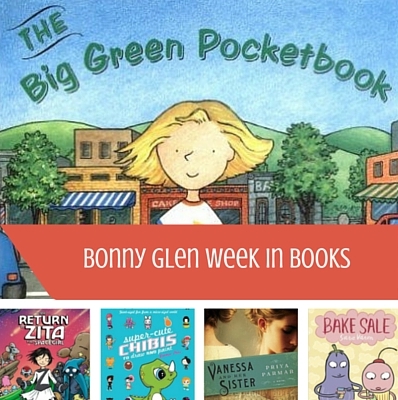
Time for another weekly roundup! Here are the books we read alone and together this week.
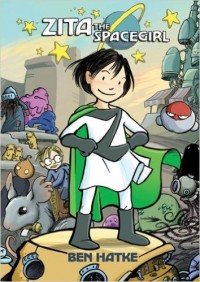
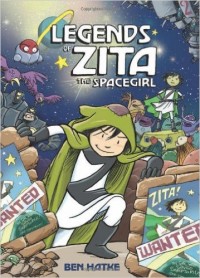
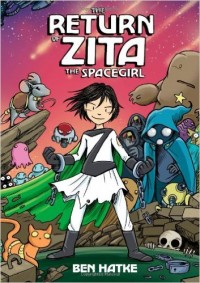
Zita the Spacegirl, Legends of Zita the Spacegirl, The Return of Zita the Spacegirl by Ben Hatke. Read by: Huck, Rilla, and Beanie, all at different times this week.
These graphic novels have wide appeal, as you can see by the range of ages enjoying them at my house—kids ages six through fourteen, this week! One morning this week, I left Huck home with Jane while I took the other kids on an outing. Now, normally Huck would jump at the chance for a whole morning of undivided attention from his big sister, but on this day I returned home to find him sitting on the couch, engrossed in the third Zita book. “The entire time you were gone,” said Jane, answering my inquisitive glance. “He read the whole series, one after the other.” When a six-year-old boy gives up the chance to trounce his grown sister in Mario Kart, you know you’ve got a winning series.
On to picture books. I never manage to track them ALL, because the boys read them in bed at night. You should see the stack on their floor right now. Actually, no you shouldn’t, it’s a mess.
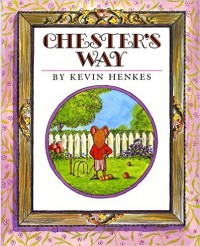
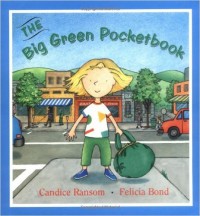
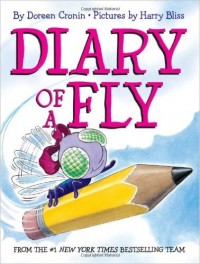
Chester’s Way by Kevin Henkes. Read to: Huck.
The Big Green Pocketbook by Candice Ransom, illustrated by Felicia Bond. Read to: Huck.
Diary of a Fly by Doreen Cronin, illustrated by Harry Bliss. Read to: Huck.
I wonder how many times I’ve read The Big Green Pocketbook out loud. It never gets old. And I still always choke up at the end!


Super-Cute Chibis to Draw and Paint: Giant-sized Fun from a Micro-sized World by Joanna Zhou. Enjoyed by: Rilla, Beanie, and me.
Beanie and Rilla have been using this book for inspiration and instruction for at least a couple of years now. Seems like it is ALWAYS out on a desk or table beside a pad of paper. Has to be their favorite how-to-draw resource. I’ve been trying to add more pictures to my bullet journal and I decided (inspired by SailorMimzy, Ms. Cendolife, and Chotskibelle on Instagram) to try to design chibi figures for our whole family. Naturally I turned to my resident experts for advice. I’m still a rookie compared to my girls, but I’m getting there.
Bake Sale by Sara Varon. Read by: Rilla.
Another beloved graphic novel. Sara Varon illustrated my friend Cecil Castellucci’s wonderful Odd Duck, a great favorite around here. Bake Sale is a quirky story about friendship. Yes, that’s an eggplant and a cupcake making…cupcakes. Rilla almost missed our Saturday night art date because she didn’t want to put this one down. (I’m seeing an absorbing-graphic-novel trend this week.)
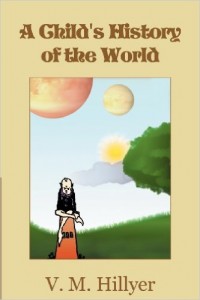
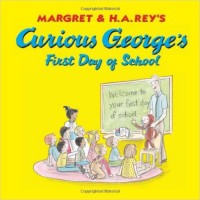
A Child’s History of the World by Virgil M. Hillyer. Read to: Huck and Rilla.
I guess I didn’t mention this one last week or the week before, but I should have! This is Rilla’s history spine. We read a couple of chapters a week, with Huck listening in—one of our narration texts. This week was the Trojan War.
Curious George’s First Day of School by Margret & H.A. Rey. Read by: Wonderboy.
Sudden Curious George attachment happening here. I expect there will be many more in our roundups, as soon as I get a chance to make a library run.
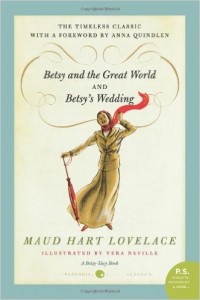

Betsy and the Great World by Maud Hart Lovelace. Read by: Beanie.
Oh, I just love this book so much. I asked Beanie to reread it as context for our early 20th-century studies. Betsy’s tour of Europe involves a romance in Venice, a long stay in Germany, and a hurried departure for home from England when the Great War begins. The final chapters involve one of my favorite moments in all of literature. I mean that without any hyperbole at all. It’s even better than the end of Pride and Prejudice.
Dancing Shoes by Noel Streatfeild. Read by: Wonderboy (in progress).
This book makes the list twice this week! Rilla and I are still listening to the audiobook (below) during our Saturday-night art dates. I pulled out the hard copy to check how much we had left, and Wonderboy wanted to read it. He’s slowly making his way through. Fun fact about the edition pictured here: I’m pretty sure this was the first book I ever wrote cover copy for.
UPDATE: I am informed that Jane, age 20, saw this book lying on a table and reread it this week as well. 🙂
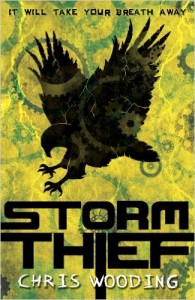
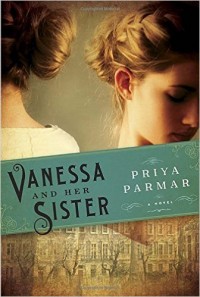
Storm Thief by Chris Wooding. Read by: me (in progress).
Rose asked me to read this—one of her favorite books. I’m only a chapter in so far, but it’s gripping. I’ll report back later.
Vanessa and Her Sister: A Novel by Priya Parmar. Read by: me (in progress).
My bedtime Kindle reading is this fictionalized tale of Virginia Woolf and her sister, as told by Vanessa. So far: fascinating and fraught. After I finished To the Lighthouse I was hungry for background on Woolf, and I found this in my queue of digital review copies. Perfect timing. More to come on this one too, I’m sure.
Books Continued from Last Week:
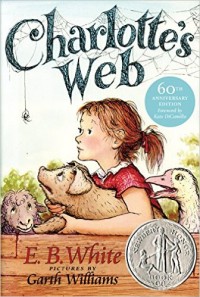
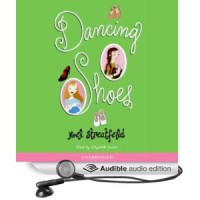
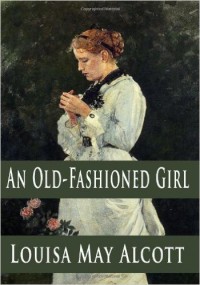
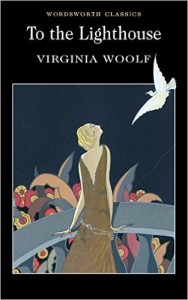
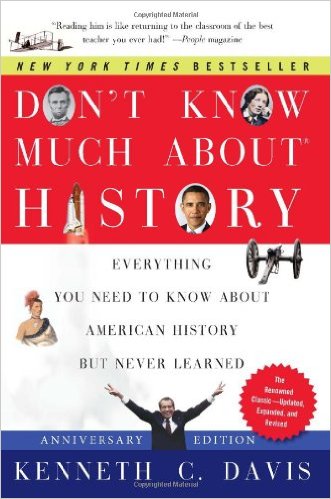
Notes:
Beanie’s lit class (which I teach) finished a two-week discussion of An Old-Fashioned Girl. Alcott is so funny—this is such a heavy-handed, moralistic book, quite preachy in places, with absolutely zero subtlety in its contrast of simple, wholesome, “old-fashioned” ways of bringing up children (especially girls) and the unhealthy “modern” practices she observed in the middle- and upper-middle class East Coast society of her day. And yet…despite the many anvils she drops all over the place, I am drawn in, I get wrapped up in the characters’ ups and downs. My group of 14-year-old girls found much to discuss in the contrasting upbringings of Fanny and Polly, and in the vision Alcott paints of a “future woman”—”strong-minded, strong-hearted, strong-bodied, strong-souled,” she says—envisioning us, the girls and women of generations to come.
Next up for this group: Sarah Orne Jewett.
We’re nearing the end of Charlotte’s Web—too soon, too soon! When we left off, the crickets were singing about the end of summer, and everyone’s preparing for the county fair. “Summer is over and gone,” sang the crickets. Good-bye, summer, good-bye, goodbye!”
Related:
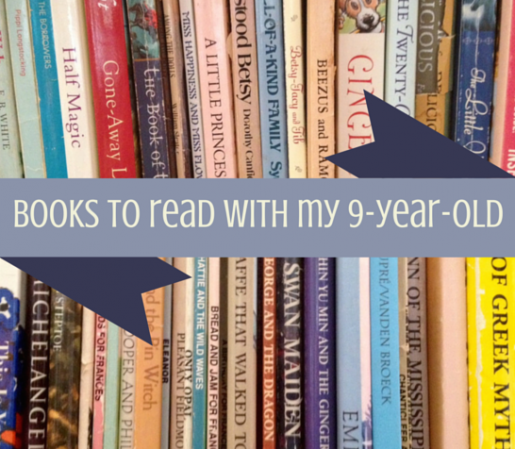

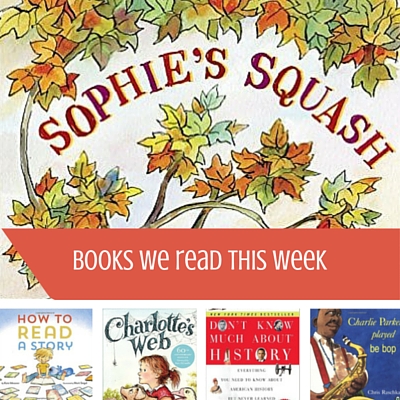

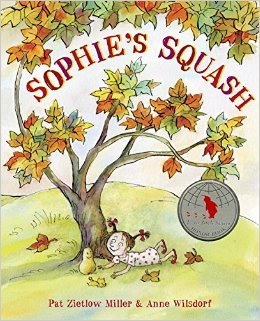 Sophie’s Squash by Pat Zietlow Miller & Anne Wilsdorf. Read to: my boys.
Sophie’s Squash by Pat Zietlow Miller & Anne Wilsdorf. Read to: my boys.
If you only pick up one new picture book for fall, let this be it. Here’s what I wrote in a Picture Book Spotlight post last year:
We first read this absolute gem of a picture book last year during the CYBILs. Fell so utterly in love with it—the lot of us—that a library copy wouldn’t do; we had to have our own. Huck and Rilla were overjoyed when I pulled it out this morning. Sophie’s instant bond with a butternut squash is utterly believable, and not just because Huck formed a similar attachment once upon a time, long before we encountered this book! “Bernice” becomes Sophie’s best friend and closest confidant, all through a bright and beautiful autumn. But as winter approaches, Bernice begins to get a bit squishy about the edges. Sophie’s parents make gentle attempts to convince Sophie it’s time to let her friend go, but since their suggestions involve treating the squash like, you know, a squash, Sophie’s having none of it. Her own solution is sweet and heartwarming, and it makes my kids sigh that contented sigh that means everything has come out exactly right.
 How to Read a Story by Kate Messner, illustrated by Mark Siegel. Read to: my boys.
How to Read a Story by Kate Messner, illustrated by Mark Siegel. Read to: my boys.
Well, I was sure I had posted a video of Huck reading this book last March. He was enchanted by the story from the first—a little step-by-step guide to enjoying a book with your best reading buddy, charmingly illustrated—and one day I caught him reading it out loud to himself, putting in all the voices. ::melt:
(In case the video won’t play for you, here’s a Youtube link.)
 Charlie Parker Played Be Bop by Chris Raschka. Read to: my boys.
Charlie Parker Played Be Bop by Chris Raschka. Read to: my boys.
One of our longtime family favorites. The rhythm and whimsy of the text has captivated each of our small fry in turn. And the art is bold and funny and altogether wonderful.
 Don’t Know Much About History by Kenneth C. Davis. Read to: the teens.
Don’t Know Much About History by Kenneth C. Davis. Read to: the teens.
Another of the texts Beanie, Rose, and I are using for our 20th-century history studies. We continue to enjoy reading history texts aloud together, which allows us all to stay on the same page (literally) and—even more important—fosters discussion and fruitful rabbit trailing. We try to reserve two 45-minute blocks a week for this, supplementing with other books (including graphic novels, historical fiction, and biographies) and videos.
Poetry:
Walt Whitman, selections from “Song of Myself”
Gwendolyn Brooks, “kitchenette building”
Books Continued from Last Week:
(Rillabooks in the top row)







I’m nearing the end of To the Lighthouse and am feeling pretty well shattered. And I sort of want to start it all over from the beginning.
Related:


Post #2 in this series: italki.com.
Note: this is not a sponsored post and I’m not affiliated with Memrise in any way. It just turned out I had quite a lot to say about it!
To follow up on my post about memorizing monarchs and presidents, I thought I’d elaborate a bit further on how we’re using Memrise to learn languages, along with some other resources like Duolingo, iTalki, and Earworms, which I’ll talk about in subsequent posts. It’s kind of amazing how much you can do from your couch. 🙂
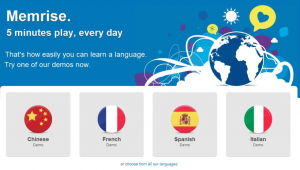
MEMRISE. Free for computer, iOS, Android. Excellent for building vocabulary, not so much a grammar tool. (But read on.) You pick any of a multitude of courses in your target language. In small batches, words appear on your screen along with “mems,” mnemonic devices created by other users to help you remember the word. The best mems create some kind of visual image that helps fix the word in your mind, the way I was taught as a kid in the 80s to remember that Caspar Weinberger was Secretary of Defense by picturing Caspar the Unfriendly Ghost defending a bottle of wine and a hamburger. I don’t remember which teacher planted that image, but the picture is still vivid. That’s what the Memrise folks call a mem.
You can scroll through all the existing user-created mems for each word or phrase, and if you don’t like any of the choices you can create one of your own. The interface makes it easy to select a public-domain image, and then you add whatever text you want. Here’s a mem I made to help me identify Chad on a map of the Countries of Africa:

It’s corny but it works. Not all mems have an image attached; a good word-picture can help just as readily. I remember Ceuta on the map (a place I’d never heard of until taking this course; an autonomous Spanish city on the North African coast across the Strait of Gibraltar from Spain) by thinking of the Spanish pronunciation —thay-uta—and using the mem “they oota be in Europe but they’re in Africa instead.” Again, not exactly the height of cleverness but it was the hook I needed to remember how to spell the name of the city.
As this image suggests, and as I described the other day, you can use Memrise to learn a lot of things besides foreign languages. Other topics I’m studying include British and English Monarchs, U.S. Presidents, and the World’s Tallest Buildings. (What can I say, I’m a junkie.) But foreign language is where Memrise really shines. The selection of languages is breathtaking in its scope. Lingala, anyone?
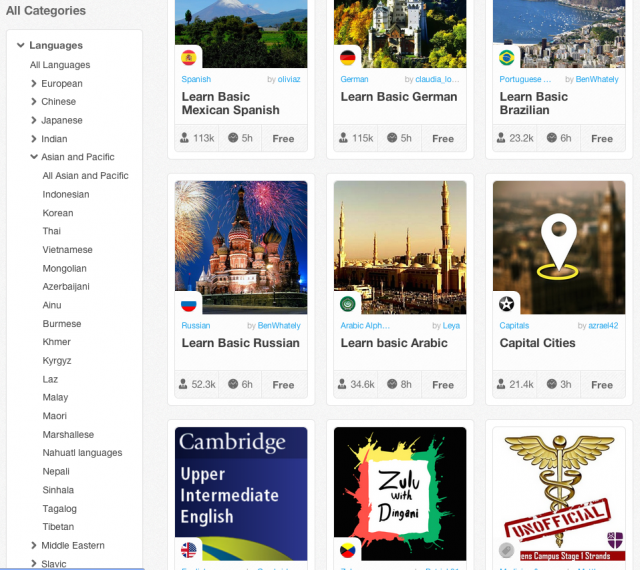
Rose, whose favorite pastime, I kid you not, is learning the first chunk of a new language, has absorbed beginner vocab in Dutch, Welsh, Russian, Hungarian, Italian, and who knows what else, in between her longer-term progress through a 1000 Spanish Words course. I’m taking several different German courses simultaneously—you can move as quickly or as slowly as you want. I too have a “1000 Words” course I use as my primary focus to add vocabulary, but there’s a “German Conversation” course as well that has lots of useful longer phrases like “I couldn’t care less,” “I completely agree with you,” and “he’s so reliable you could build houses on him.” Then there’s the short course on prepositions I whisked through as a review, and a challenging one on verb conjugations. And then—slowly, oh so slowly! probably only a hundred words over the course of a year!—I’m using the vast and comprehensive 5000 German words course which is packed with upper-level vocabulary.
But then, I thrive on variety. Other users might prefer to move steadily through one course at a time. There’s a fair amount of overlap in my assortment of courses, which helps cement things in my mind, but I can see that it might feel redundant or confusing to others.

Regarding mems for language, I’ve found that the best kind are those that help me work from the English to the German. I can usually remember the English meaning of a German word after a couple of repetitions, but it’s much harder for me to look at English and grope for its German counterpart. The majority of user-created mems seem to work the opposite direction—they’ll start with the German and use English puns to link the word to the English. For example, here’s a text-only mem I made for aufhören, German for “to stop doing something”:
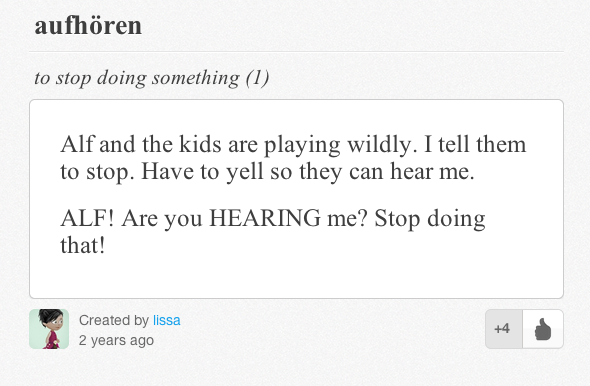
It didn’t really work for me, not after some weeks away from the program. I couldn’t look at the English definition and get to the German word. What I really needed was something that starts with “stop doing something” and gets to “aufhören.” In this case, I tried to enhance the mental picture that goes with the above mem: I picture a Stop sign with Alf the TV alien perched on top holding a phone—the phone because the “hören” part reminds me of Auf Wiederhören, “until I talk to you again,” which you say when getting off the phone. Now, this revised image is working pretty well for me—but it requires me to remember to use the “stop” in “stop doing something” as my jumping-off point for memory. Will I remember that if I come across the word in another context a year from now? I don’t know. I do know that a vivid and specific mental image makes a tremendous difference in my ability to connect words in two different languages, and that after some repetition, the word is transferred to my permanent memory and I don’t need to rely on the mnemonic device anymore.
This repetition is part of what makes Memrise so successful: the program works by giving you the words at ever-increasing intervals as you demonstrate mastery. First you “plant” the words, a few at a time, and they give you a lot of interactions with it in different ways—English to German, German to English, multiple choice, type it in. This process only takes a few minutes for each new batch of words.
Here’s one example:
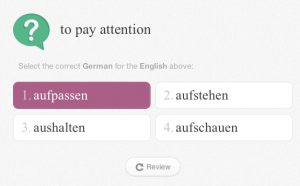
Here’s another:

Now the words are planted in your short-term memory. Memrise locks them for a few hours (sort of—you can override the lock by clicking “overwater” for extra practice). After that, they are ready for “watering”—you come back and review them again. If you get a word right on the first attempt, next time there will be a longer interval before it’s ready for watering. Eventually, as the words move from short-term to long-term memory, the intervals may be many days long.
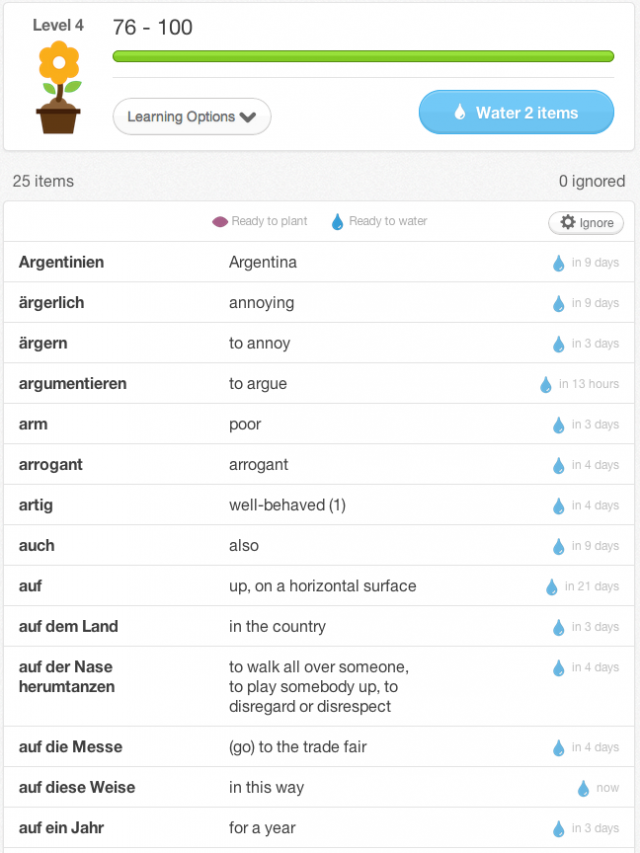
As you can see, most of the words in this lesson are in my long-term memory and don’t need “watering” (reviewing) for several days or even weeks. A phrase I missed yesterday, “auf diese Weise,” is ready for watering now. “Auf,” a common preposition I learned decades ago, is (obviously) in my long-term memory and only comes around every few weeks. If I wanted, I could tell Memrise to ignore it altogether—there’s a setting you can click that means I’ve got this one down and never need to review it again. I certainly don’t need “auch,” a word I learned on day one of German, popping up in my word list. I don’t always bother to mark words “ignore,” though, since it’s an extra step.
I mentioned above that what Memrise excels at is teaching you vocabulary, but it’s not as strong at conveying grammar. You won’t necessarily learn word order or grammatical cases from this program—for that we use other resources like Duolingo (about which, more in a future post). But what my kids and I have found is that Memrise is invaluable for building our vocabulary, and grammar is so much easier to nail down when you have a big word list to draw from. And when I was really struggling to keep straight which prepositions take which cases for object nouns, Memrise came to my rescue. I found a German course that focuses on that very thing—you have to enter +A or +D after each verb-preposition combo to indicate whether the noun will take accusative or dative. That’s the kind of drill I need to take me to the next level of fluency. I’ve been stuck in the middle of Level B1 (going by the Goethe Institut’s fluency scale) ever since college. My periodic reimmersions in German have prevented me from losing what skill I’d gained, but to move forward toward real fluency I need some more intensive drill. This course is helping shift my recall from groping to automatic.
How much time does Memrise take? It can be as little as five minutes a day, if you want—plant a couple of new words, maybe water some of your older ones. I tend to go in intense bursts of activity with long lulls between them—sometimes many weeks will pass without my checking in, and that’s fine. The whole point of the program is to plant the words in long-term memory. If I’ve forgotten them—the app can tell by how I answer—they get pushed back into a more active, frequent rotation in the list.
During my intense bursts, I add new words, level by level. Then, when my focus inevitably shifts elsewhere, I stop accruing new vocabulary but the program is there to help me maintain the vocab I’ve got. “Watering” your words can be really relaxing and addictive. Some people play Candy Crush; I water my German verbs.
The iPhone app is pretty sharp. I like to check in last thing before I go to sleep and see if any of my words need watering. It’s a good waiting-room activity, too, since the courses I’m taking work fine with the sound turned off.
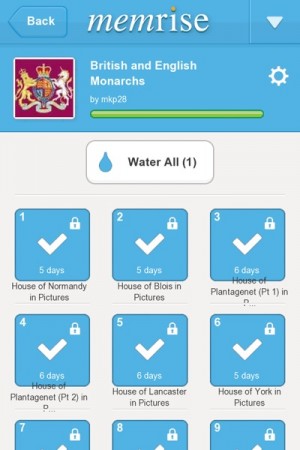
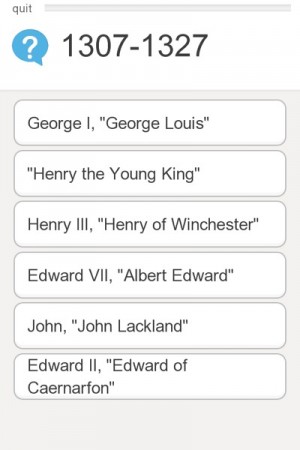
Okay, I’ve talked a lot about how I use Memrise for my own learning. What about the kids?
My younger kids are very interested in it; Rilla begs to use it for French, but it’s a skitch above her level. Her spelling isn’t strong enough yet for her to be able to easily enter answers in English, let alone French. Also, and significantly, Memrise is designed for adults, and the mems are created by adult users, which means that occasionally you come across one that’s a bit off-color. For these reasons, I think it’s better saved for kids 13 and up, depending on your parental comfort level. For us, 12 or 13 is a good threshold.
For my younger set, we tend more toward apps specifically designed for children, like the ones I reviewed at GeekMom a while back.
Before heading off to college, Jane used Memrise to learn Japanese kanji. Rose, as I said, likes it best as a way to experience a wide variety of languages. She’s very interested in language and linguistics, and Memrise has allowed her easily to explore the rudiments of more tongues than I can keep track of. Meanwhile, she’s making steady progress through her Memrise Spanish course, which we supplement with a grammar workbook. (She’s not keen on Duolingo. Beanie and I love it.)
Also, Rose doesn’t bother with mems. She says she remembers better without them. What clicks for her is Memrise’s repetition cycle, the way the words you’re weakest on will appear more frequently in your practice sessions.
Beanie, like me, is into German. She does about 15 minutes of Memrise a day, 4-5 days a week. Her vocabulary is growing steadily and the program has the advantage of building excellent spelling skills as well.
There are also Memrise courses for the SAT and other college admissions tests, including SAT vocab builders. You can create brand new courses, too, and make them private or public as you choose. (Choose: wählen, she CHOOSES to wear a VEIL IN church. That’s someone else’s mem but it worked like a charm for me.) If I hadn’t found a course with the verb-preposition-case info I wanted, I was thinking about creating my own. I’m always happy, though, when someone else does the leg work. 🙂
Now if you’ll excuse me, I have 21 mems to water!
 King George I by Sir Godfrey Keller. Image source: Wikimedia Commons.
King George I by Sir Godfrey Keller. Image source: Wikimedia Commons.
The tide seems to be ebbing, as surely as tides do ebb. We’ve put away our science reading for the summer, leaving the world poised for dramatic change in the wake of Sir Isaac Newton. The history books aren’t yet officially shelved, but it’s a week or more since we picked one up. We got sidetracked by languages and kept conjugating the mornings away. Latin and German formally, the lot of us, and French informally via children’s songs (go ahead, ask us how many elephants can balance on a spiderweb), and Rose has me inching through Spanish grammar with her, and all of us have way too many plants to water daily on Memrise. And yet we keep planting more!
Ah, Memrise. Thanks to it, I can now list all the monarchs of England and Britain—with dates for all but a couple of sticky ones. Those two kings in the middle ages with interrupted reigns. One of the Henrys and one of the Edwards, I think. They’re still tripping me up—the specifics, I mean. I can wrangle them into their spots in the list. And I’m darn proud that I can keep all those Georges and Edwards and Henrys straight—even the one with long strings of names, since Memrise insists I use every doggone one of them. Edward VIII, Edward Albert Christian George Andrew Patrick David, even! (Edward Always Chases Girls And Parties Down—sorry, Ed, I know it isn’t very dignified but it works. Could be worse: think of poor Left-Leg Louie, aka King George I, George Louis. See him up there in the picture, with his left leg forward? The unfortunate nickname was someone else’s mem, and it worked.)
We’ve nailed the U.S. Presidents, too. We could sing them in order already—well, except for the bunch around Rutherford B. Hayes where we always got tripped up—thanks to an old (very old) Singin’ Smart cassette. (Cassette! That’s how old!) But now we’ve pegged them to dates. Ulysses S. Grant did not take the summer of ’69 for GRANTed. During James K. Polk’s term (1845-1849) the country POLKa’d its way to California just in time for the Gold Rush. The louder it makes you groan, the more likely you are to remember it.
Rose scoffs at mnemonics and just plain memorizes. Not I. I gotta have a hook. Richard I and Richard II both had reigns that closed out a century, did you know that? 1199 and 1399 respectively. Charles I (the Merry Monarch) and George III began their reigns in 1660 and 1760, and somehow that link makes them both easier for me to remember. William Henry Harrison died in office in 1841; James A. Garfield ditto in 1881. Another peg.
As always happens when you set “separate” chunks of history side by side, surprises hit you. I had never put it together that Teddy Roosevelt became President the year Queen Victoria died! His two terms align almost exactly with the reign of King Edward VII: you know, the Edwardian era. This is one of those connections I should have made earlier, and probably did make a time or two, glancingly, somewhere along the line, but I can’t say it really stuck. When I’m reading the Betsy-Tacy books (set during that very decade; Betsy graduates from high school in 1910, I think) I’m not thinking about who’s on the throne over in England. Nor, when watching Upstairs, Downstairs (in which, if I recall correctly, a whole episode revolved around the death of the King), was I picturing Theodore Roosevelt gallivanting around the U.S. creating National Parks. Connections are everything in education, and here’s one I hadn’t made until now. Teddy and Eddie. Got it.
***
I meant to make a list of all the books I’ve seen people reading, and books I’ve read aloud. Failed again. Missed some good ones, too! As for me, I read the first big chunk of The Goldfinch and found it so thoroughly harrowing I had to put it down for a little while. At this rate, it might take me the whole summer.
***
Literature of the English Country House has begun! I’m behind already! That’s quite all right!
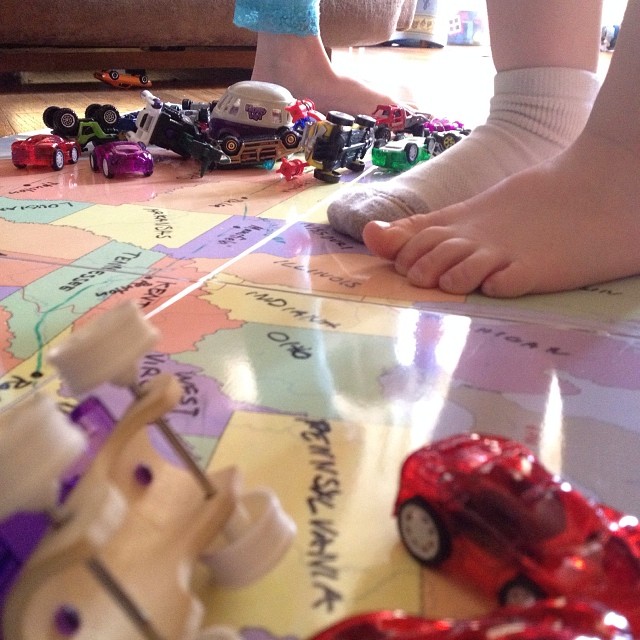
Some quick notes on things we’re using a lot lately:
• Spellosaur app (Rilla and Huck). With the paid version, you can enter lists of spelling words for each kid. They both ask to play it daily, which is fine by me. 🙂 Huck’s favorite part is recording his own audio for the words, which he then laughs at on playback during the activities. I wouldn’t normally be working on spelling with a five-year-old but he enjoys the app so much, it isn’t work. For Rilla, I’ve been entering word lists from an old copy of Spelling Power. She also created a second user account to use for French words. Here, too, she loves recording the audio herself.
• I couldn’t find our Chronology game (I know it’s around here somewhere), but Rose and Beanie have been absorbing a lot of history this year, in a jumble of time periods. Science history in the Renaissance, American history between the Revolutionary and Civil Wars, medieval English literature (now heading into Renaissance there too), all sorts of non-coordinated reading going on. We took our old timeline down last year—it was up too high and we weren’t really adding to it anymore—and I wanted some way to make chronological sense of all these events they’re soaking up. So I had a brainstorm and made our own custom Chronology set, sort of. We got index cards and wrote various key events and people on them, with a little stripe of colored highlighter on one side to indicate science, literature, arts, or political history.* They put the dates on the back of each card. We play the game just like Chronology: I put down one starter card and then they take turns picking another card, taking a stab at the date, and putting it down in a row in chronological order. If we can keep it up, we’ll build a nice collection of the main points of our history/science/literary studies this year. They get pretty giggly and competitive in the game, so it’s been way fun so far.
*A fifth color denotes fictional works related to a period we’re studying. There are certain novels and films that will always represent a particular time and place—Betsy in Spite of Herself, for example, popped immediately into the girls’ minds when we read about German immigrants building a home away from home in Milwaukee.
• The other thing we do quite a lot in our history studies is link whatever we’re reading about to our own family history, as far as we’re able. This applies mostly the 18th century and on, of course (although we do have a couple branches on the family tree traced back to the 16oos). I like to pull up our tree on Ancestry.com and take a look at who among our ancestors was living in a particular area at a given point in time. The big waves of Irish and German immigration in the first half of the 19th century, for example, became much more vivid to the girls when they got a look at the names and disembarkation dates of their forebears who were among those masses.
May 22, 2010 @ 4:16 pm | Filed under:
Books Earlier this week, Phoebe asked me to recommend books about the middle ages. Jane and I went around the house pulling things off shelves. The timing was perfect, because I’ve been on a bit of a middle ages jag myself, ever since reading The Perilous Gard (so good! read it!!) which though set in Tudor times, at the cusp of Elizabeth’s reign, is a retelling of the medieval Tam Lin ballad. I’ve listened to perhaps a dozen different renditions of Tam Lin over the past few weeks; this one by Bob Hay and the Jolly Beggars.
Here’s a list of the middle-ages-related books we found around the house. There are many other wonderful books about the middle ages, of course. (Rosemary Sutcliffe and Susan Cooper novels come to mind.) Feel free to leave your own lists (or links to your lists) in the comments!
Disclaimer: Not all of these are appropriate for younger children.
** indicates my family’s favorites
HISTORICAL FICTION AND FANTASY
CLASSICAL MEDIEVAL STORIES including Arthurian tales
• Medieval Romances edited by Roger Sherman Loomis & Laura Hibbard Loomis (Perceval, Tristan & Isolt, Sir Gawain & the Green Knight, etc; this was the text for my college Medieval Lit class & has a highly quotable intro, which I shall indeed quote in the next post)
• Favorite Medieval Tales by Mary Pope Osborne, illustrated by Troy Howell (Finn Maccoul, Beowulf, Arthur, Song of Roland, Sir Gawain & the Green Knight; Robin Hood, Chanticleer)**
• The Story of King Arthur and His Knights by Howard Pyle
• The Sword in the Stone by T.H. White (Arthur)**
• The Acts of King Arthur and His Noble Knights by John Steinbeck (based on the Malory)
• The Story of King Arthur by Tom Crawford (Dover Children’s Classics)
• The Canterbury Tales by Chaucer (of course!!)
NONFICTION
• The Story of the World, Vol. 2: The Middle Ages by Susan Wise Bauer
• How the Irish Saved Civilization by Thomas Cahill
• Living Long Ago (Usborne Books, lots of pictures: clothes, customs, housing)
• Famous Men of the Middle Ages by John H. Haaren & A. B. Poland (Attila the Hun, Barbarossa, Clovis, Justinian, etc)**
• A Medieval Feast by Aliki (picture book)**
• The Life of King Alfred by Asser, Bishop of Sherborne (written in Latin around 888AD, translated by J.A. Giles)
NONFICTION, SORT OF (contains legend or considerable fictionalization)
• Our Island Story by H.E. Marshall
• The Sailor Who Captured the Sea by Deborah Nourse Lattimore (picture book: Book of Kells; illuminated manuscripts; monasteries; Vikings attack Ireland) (This maybe belongs just under fiction)
SAINT STORIES
Around the Year: Once Upon a Time Saints by Ethel Pochocki (not all the saints depicted here are medieval, but many are)
Our Island Saints by Amy Steedman
Patrick, Saint of Ireland by Tomie de Paola (picture book; early middle ages)
Tomie de Paola also did picture books about St Francis and Sts Benedict & Scholastica, but I couldn’t find those today)
Brigid’s Cloak by Bryce Milligan, illustrated by Helen Cann
FOLK AND FAIRY TALES WITH A MEDIEVAL FLAVOR
• Saint George and the Dragon by Margaret Hodges, illustrated by Trina Schart Hyman (picture book; although St George predates the middle ages, the dragon legend comes from Spenser’s The Faerie Queen [1590] and is based on medieval writings–the Arthurian stories of Geoffrey of Monmouth [1136]; Hyman’s illustrations have borders reminiscent of illuminated manuscripts)
• Chanticleer and the Fox by Barbara Cooney, based on the story from The Canterbury Tales**
• Heckedy Peg by Don & Audrey Wood (picture book; fairy tale; setting is a medieval village)**
• The Irish Cinder Lad by Shirley Climo, illustrated by Loretta Krupinski (picture book; Irish fairy tale; dragon, castle, princess)
• The Three Sorrowful Tales of Erin by F.M. Pilkington (Irish fairy tales; Children of Lir)
• The King of Ireland’s Son by Padraic Colum (novel-length Irish folk tale)**
OTHER WORKS OF NOTE:
Twain’s bio of St. Joan of Arc
Heaney’s translation of Beowulf
Dante’s Divine Comedy
Stories about Robin Hood (we have several versions
 Good Sir Boy of Wonder
Good Sir Boy of Wonder



 You know that hurricane I wrote about in Tide Mill Lane? I learned of it in The Yankee—including whose roof was torn off and what other damages Roxbury folks suffered. The Brighton Cattle Show, right down to all the winners? The Yankee. The vandalism of the Bible in a Roxbury church. The first gaslights in Boston. The parade, the details of the wagons and the whole celebration. The first elephant brought to North America. All that priceless historical information came right out of newspaper articles that are available on microfilm at the Boston Public Library.
You know that hurricane I wrote about in Tide Mill Lane? I learned of it in The Yankee—including whose roof was torn off and what other damages Roxbury folks suffered. The Brighton Cattle Show, right down to all the winners? The Yankee. The vandalism of the Bible in a Roxbury church. The first gaslights in Boston. The parade, the details of the wagons and the whole celebration. The first elephant brought to North America. All that priceless historical information came right out of newspaper articles that are available on microfilm at the Boston Public Library.









































